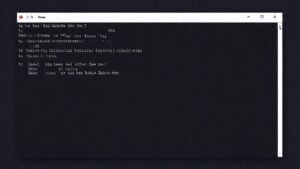Auschwitz gas chamber: Theuer and the making of a genocidal system
- THE MAG POST

- Aug 25
- 9 min read

Auschwitz gas chamber operations reveal how a brutal machine of murder operated with chilling procedural calm, turning routine tasks into acts of mass violence that scarred a generation. This article reconstructs the life, assignments, and testimonies surrounding Adolf Theuer, a Sudeten German SS member who helped execute one of history's most infamous crimes. By tracing his path from a bricklayer to an enforcer within the camp’s deadly framework, we gain a clearer sense of how individual roles fit into a vast, systematic apparatus designed to obliterate lives. The narrative emphasizes memory, accountability, and the enduring lessons of such atrocities.
Auschwitz gas chamber: Early life and SS enlistment
Adolf Theuer’s ascent into the SS began against a backdrop of upheaval and opportunity, where many ordinary men found a path that would reshape history. He joined the Waffen-SS in 1938, shortly after the Nazi takeover of Czechoslovakia, signaling a shift from civilian tradesman to a participant in state violence. His early years hint at the complex dynamics that allowed disciplined, loyal individuals to become cogs in an unstoppable machine. Understanding this transition helps illuminate how personal grievances, nationalist zeal, and coercive authority converged within the camps.
Auschwitz gas chamber: From bricklayer to SS recruit
Theuer’s prewar occupation as a bricklayer provided him with practical, methodical skills that could translate into the precise, procedural tasks demanded by the SS. When he enlisted in 1938, he entered a system that rewarded conformity and efficiency, traits that would later shape his work inside Auschwitz. The trajectory from a craft-based trade to state-sanctioned brutality underscores how the era normalized brutality by channeling everyday competencies into violent ends. His deployment to Auschwitz in 1940 at the rank of SS-Rottenführer marked the formal entry into a regimen built to suppress, control, and annihilate through bureaucratic rigor.
Promotion came on 1 August 1941, elevating him to SS-Unterscharführer, a rank that placed him closer to the innermost operations of the camp. In this capacity, Theuer joined the Sanitätswesen, the medical support cadre that operated within five central camp departments. The role required disciplined adherence to protocols, but the context—mass murder under cover of medical language—turned those procedures into instruments of atrocity. The line between routine care and orchestration of suffering blurred, revealing how the veneer of order could cloak a horrifying agenda.
Auschwitz gas chamber: The Desinfektionskommando and duties
Within Auschwitz, Theuer served in the Desinfektionskommando, the disinfection unit whose name belied its grim function. This department became a central mechanism for the perpetration of mass killing, with orderlies handling tasks that directly fed the gas chamber program. The role demanded calm, deliberate action as prisoners faced coercive exposure to deadly agents. The testimony of contemporaries underscores the chilling routine of murder as a job description, illustrating how the structure of the camp normalized the taking of human life as a task to be completed with efficiency and minimal emotional disturbance.
Among his responsibilities was the critical and infamous act of inserting Zyklon B into gas chambers, a duty shared by other orderlies such as Hans Koch and Josef Klehr. Accounts from the Frankfurt Auschwitz Trials indicate that Theuer described to his superior that he would perform the gas insertion when ordered by the camp doctor. This procedural sharing of responsibility emphasizes the collaborative nature of the crime, where a network of individuals, bound by orders and enforced by fear, enabled a system large in scale and brutal in its execution.
Auschwitz gas chamber: The human face of cruelty in testimony
As the war drew toward its end, survivors and witnesses stepped forward to recount the mechanized cruelty they endured. The testimonies surrounding Theuer reveal a portrait of obedience, fear, and the moral breakdown that accompanies systemic violence. These narratives, though painful, are essential for understanding how individuals rationalized their actions within a framework that demanded conformity to an overarching plan of annihilation. The human dimension—the emotional toll on the perpetrators and the victims alike—grounds the historical record in concrete, devastating detail.
Auschwitz gas chamber: Kaduk’s recollection and moral strain
Oswald Kaduk, another SS member, offered a striking recollection of Theuer’s moment of coercion. Kaduk described a scene in which a fellow Upper Silesian, under pressure and with tears in his eyes, performed the gas insertion as directed by the camp doctor. The vividness of Kaduk’s account underscores the tension between duty and conscience that persisted even within the most brutal operations. It also shows how individual psychology intersected with systemic forces, producing acts that onlookers would later interpret through the lens of memory and accountability.
In Kaduk’s testimony, the emotional strain is not merely a footnote but a central thread in the narrative of atrocity. The account suggests a moment when the machinery of murder crossed from abstract policy into a tangible act, witnessed by witnesses who carried the stories of those killed. The portrayal of Theuer’s reluctant action—tears, hesitation, and the urgent push to comply—serves as a stark reminder of the human fragility that persisted even among those tasked with executing mass violence.
Auschwitz gas chamber: Survivor testimony and the memory of screams
Survivor Edward Pys provided a harrowing account during the Frankfurt trials, describing the auditory intensity of the gas chamber’s operation. He recalled the engine’s roar and the screams of those inside, noting that the sound could not be drowned out despite the car’s noise. Such testimonies anchor historical memory in sensory detail, shaping how later generations perceive the scale and immediacy of atrocity. These memories contribute to a broader understanding of the mechanisms by which victims were dehumanized and erased from the living record.
Pys’s narrative emphasizes that even in controlled environments, human voices, fear, and pain persisted as undeniable facts of the experience. The recollection of screams, the almost airtight condition of the chamber, and the car engine’s intrusion into a moment of extreme violence reveal a chilling intersection of technology, policy, and human suffering. These testimonies illuminate the ethical imperative to remember, study, and teach the realities of genocide to prevent its recurrence.
Auschwitz gas chamber: Postwar movement and the toll on memory
The end of the war did not erase Theuer’s footprint; it pushed the memories of these crimes into the public record, where trials and testimonies would crystallize the moral assessment of his actions. After evacuation of the camp in January 1945, Theuer was reassigned to Ohrdruf, a subcamp of Buchenwald, where his tasks included murdering sick prisoners. The brutal continuity from Auschwitz to Ohrdruf highlights the persistence of orders and the maintenance of a structure designed to eliminate those deemed unfit. The memory of these movements emphasizes the need for historical vigilance and legal accountability in the aftermath of atrocity.
Auschwitz gas chamber: From order to execution—Theuer’s later acts
Within Ohrdruf, Theuer’s role continued to be framed as enforcing a brutal policy, even as the war’s momentum shifted and Allied forces advanced. The narrative of constant relocation shows how the same personnel could carry out comparable acts in different contexts, reinforcing the systemic nature of Nazi genocidal operations. The military and administrative networks that supported these actions persisted, suggesting that the collapse of one location did not automatically dissolve the infrastructures of murder. Analyzing these transitions helps scholars understand the architecture of complicity that spanned multiple camps and regions.
The broader implication is that the machinery of murder was not confined to a single facility but constituted a nationwide, interconnected system. Theuer’s later movements illustrate how a persecutory regime maintained cohesion through discipline, loyalty, and the ready deployment of violence against those labeled as enemies. This continuity invites careful scrutiny of wartime protocols, command structures, and the moral hazards of obedience when confronted with orders that transgress basic humanity.
Auschwitz gas chamber: Trials, verdicts, and the road to justice
The postwar period brought formal scrutiny through Prague trials and the later Frankfurt Auschwitz trials, where testimony and documentation exposed the mechanics of the genocidal operation. Theuer, along with others, faced capital punishment for his role in the system’s murderous apparatus. The flow of justice in these cases underscored the international community’s commitment to accountability, even as survivors wrestled with the long shadows of memory. The legal process sought to translate collective memory into concrete consequences for individuals who carried out orders that led to immense suffering.
Auschwitz gas chamber: Prague trial and the fate of Theuer
In Prague, Theuer and Sofie Hanel stood before judges to answer for crimes committed during the Holocaust. The proceedings articulated a framework whereby perpetrators could be identified, confronted with evidence, and sentenced according to the severity of their actions. The outcome—death sentences for Theuer and Hanel—reflected a moral calculus that aimed to prevent impunity for genocidal acts. The trial also reinforced the importance of documentary records, witness testimony, and rigorous legal standards in shaping the historical record of atrocity.
These judgments reinforced the principle that following orders does not absolve responsibility. They provided a public mechanism to acknowledge victims and affirm the rule of law in the face of overwhelming criminality. The legacy of the Prague proceedings contributed to the broader discourse on international law and the prosecution of war crimes, influencing postwar legal norms and the creation of institutions designed to deter similar horrors in the future.
Auschwitz gas chamber: Frankfurt Auschwitz trials and memory under scrutiny
The Frankfurt Auschwitz trials of the 1960s further illuminated the scale and organization of the Nazi death camp system. Survivors’ testimonies, scholars’ analyses, and prosecutors’ questions built a composite picture of how individuals like Theuer operated within a criminal enterprise. The proceedings reinforced the idea that memory must be safeguarded through meticulous evidence and persistent public discussion, ensuring that the lessons of Auschwitz remain actionable in contemporary ethics and policy. The trials also highlighted the importance of education in preventing denial and distortion of historical crimes.
In sum, the judicial processes surrounding Auschwitz crimes created a durable record that persists in museums, archives, and classrooms. They established a precedent for how societies confront collective guilt and protect future generations from repeating such atrocities. By documenting the roles of orderlies, doctors, and other collaborators, these trials helped transform raw memory into a discipline of historical accountability that endures in scholarly and public discourse.
Auschwitz gas chamber: The human dimension and the ethics of remembrance
Beyond the legal records, the case of Theuer compels a reflection on the human dimension of atrocity: the capacity for ordinary individuals to participate in extraordinary evil when confronted with a brutal regime. The narratives of Kaduk, Pys, and others reveal the tension between personal conscience and institutional obedience, reminding readers that memory serves as a warning and tribute. The ethical imperative is not only to recount facts but to honor those who suffered and to safeguard future generations from repeating such mistakes.
Auschwitz gas chamber: The memory economy and educational responsibility
Historically informed remembrance involves translating traumatic episodes into accessible, responsible education. By examining the role of Theuer and his collaborators, educators can illuminate how bureaucratic processes, peer pressure, and coercive authority contributed to mass murder. This approach emphasizes critical thinking, moral reasoning, and the necessity of preserving archival records so that future learners appreciate the fragility of civilization in the face of extremist ideology. The aim is neither sensationalism nor erasure, but a sober commitment to truth and remediation.
Effective remembrance also means engaging with survivors’ testimonies, scholarly debates, and public memory projects that contextualize the Holocaust within broader global patterns of genocide. By situating Theuer within a larger operational framework, readers can discern common threads—dehumanization, bureaucratized cruelty, and the erosion of ethics—that recur across histories. The result is a richer, more rigorous understanding that informs contemporary discussions on human rights and justice.
The Final Takeaways: lessons from the Auschwitz gas chamber narrative
What remains most urgent from this study is the obligation to remember, analyze, and teach with integrity. Theuer’s tale, and the testimonies surrounding it, illustrate how systems of power can co-opt ordinary individuals into extraordinary violence. The ultimate aim is to convert memory into moral action: to resist the normalization of cruelty, to demand accountability, and to ensure that the phrase Auschwitz gas chamber never again denotes a routine, unchecked authority over life. Memory, in this sense, becomes a living instrument for shaping a more humane future.
The final takeaway: memory as duty, accountability as safeguard
Remembering a dark history is not a nostalgic exercise; it is a civic duty rooted in accountability. The narratives surrounding Theuer remind us that every era bears responsibility for questioning statements, verifying evidence, and protecting vulnerable communities from coercive power. By learning from these events, institutions, educators, and individuals can foster a culture of vigilance that prioritizes human rights and the rule of law. The process of remembering is ongoing, demanding continued reflection, scholarly debate, and public engagement to sustain the resolve against hatred and violence.
Ultimately, the Auschwitz gas chamber story is a warning and a pledge: never again must people be reduced to mere instruments of annihilation. Through robust education, transparent memory-work, and steadfast justice, societies can honor the victims while building a more compassionate, accountable world. Let this record provoke action, empathy, and a renewed commitment to human dignity for all.
Aspect | Summary |
Overview | Explores Adolf Theuer's role within the Auschwitz gas chamber system and the Desinfektionskommando, framed by historical testimony and wartime context. |
Key Figures | Includes Kaduk and Pys as eyewitnesses, with references to Mengele and other SS personnel who intersected Theuer's duties. |
Trials & Justice | Documents Prague and Frankfurt Auschwitz trials, verdicts, and the pursuit of accountability for mass murder. |
Legacy & Memory | Addresses how survivor testimony and scholarly work shape public memory and education on genocide. |






















































Comments